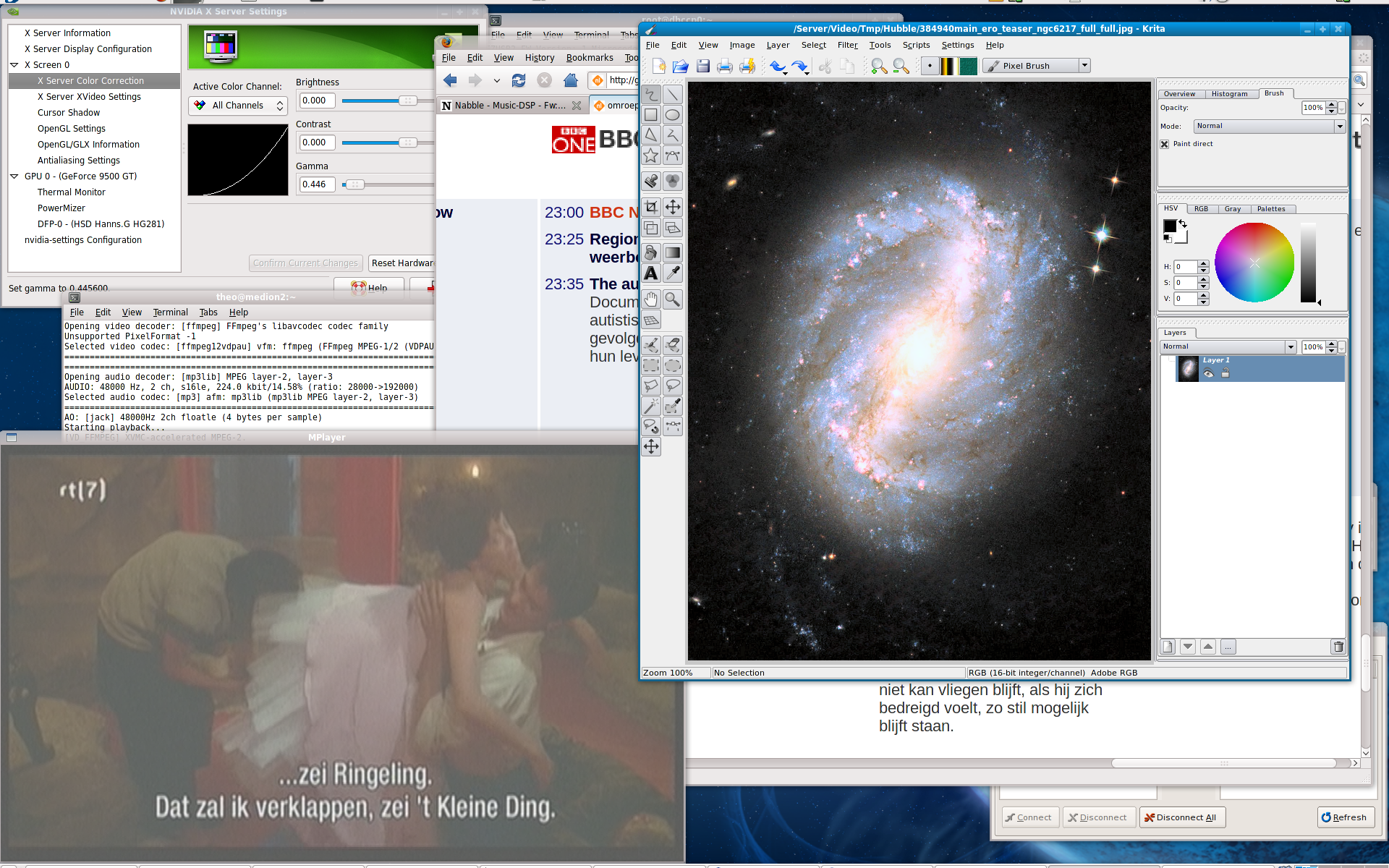Theo Verelst Local Diary Page 84
I've ditched the usual header for the
moment, I think it doesn't help much anyhow.
This page is copyrighted by me, and may be read and transferred by any
means only as a whole and including the references to me. I
guess that's normal, the writer can chose that of course, maybe
Ill make some creative commons stuff one day, of course I have
made Free and Open Source software and even hardware designs available!
This
page is under construction, so check back later, too.
Sept 26, 18:06, 2009
A
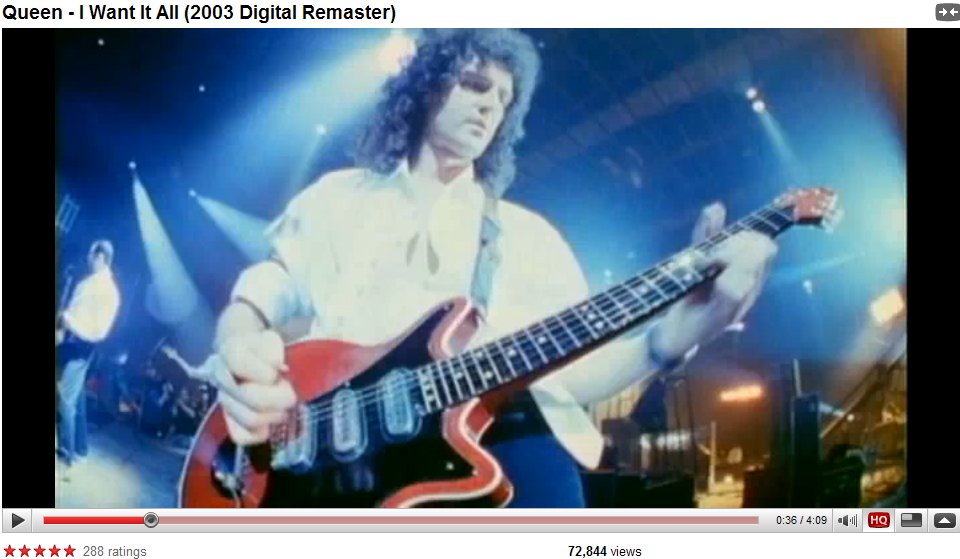
Larry Carlton I played this song of his long ago in a jazz combo: great
music.

This is from longer ago: not on youtube but elsewhere a clip from this
classic non-gospel non-rock:
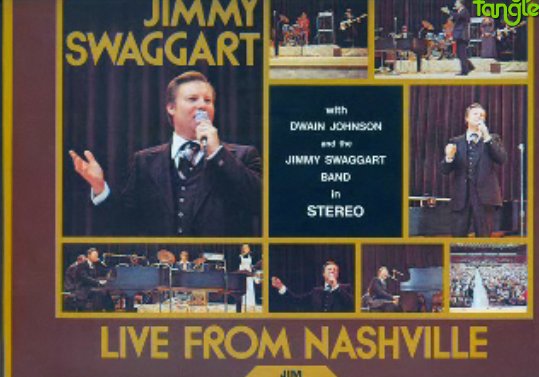
Qsc
a end amp example, rails coupled over C's to speaker, virtual ground:
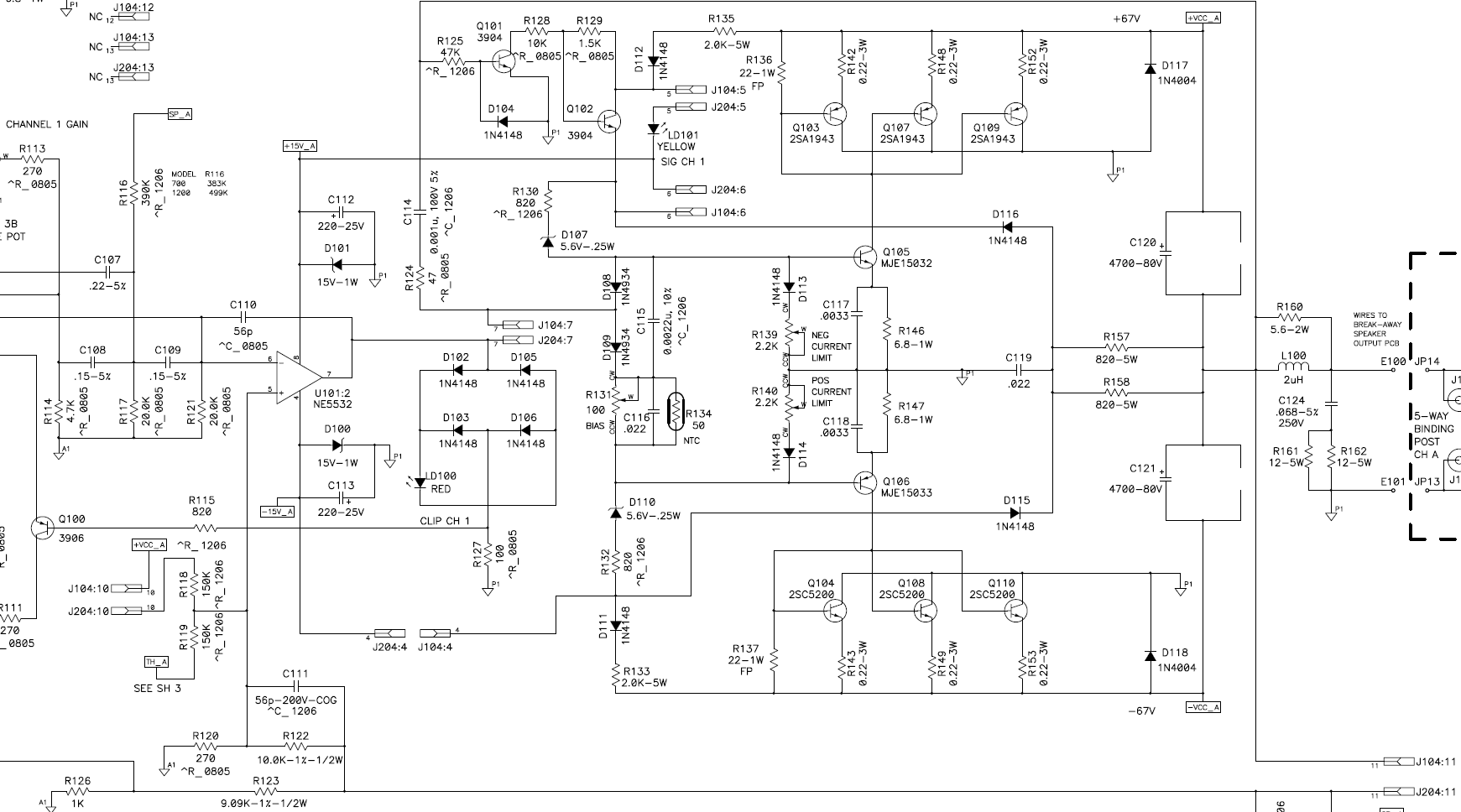
Clouds
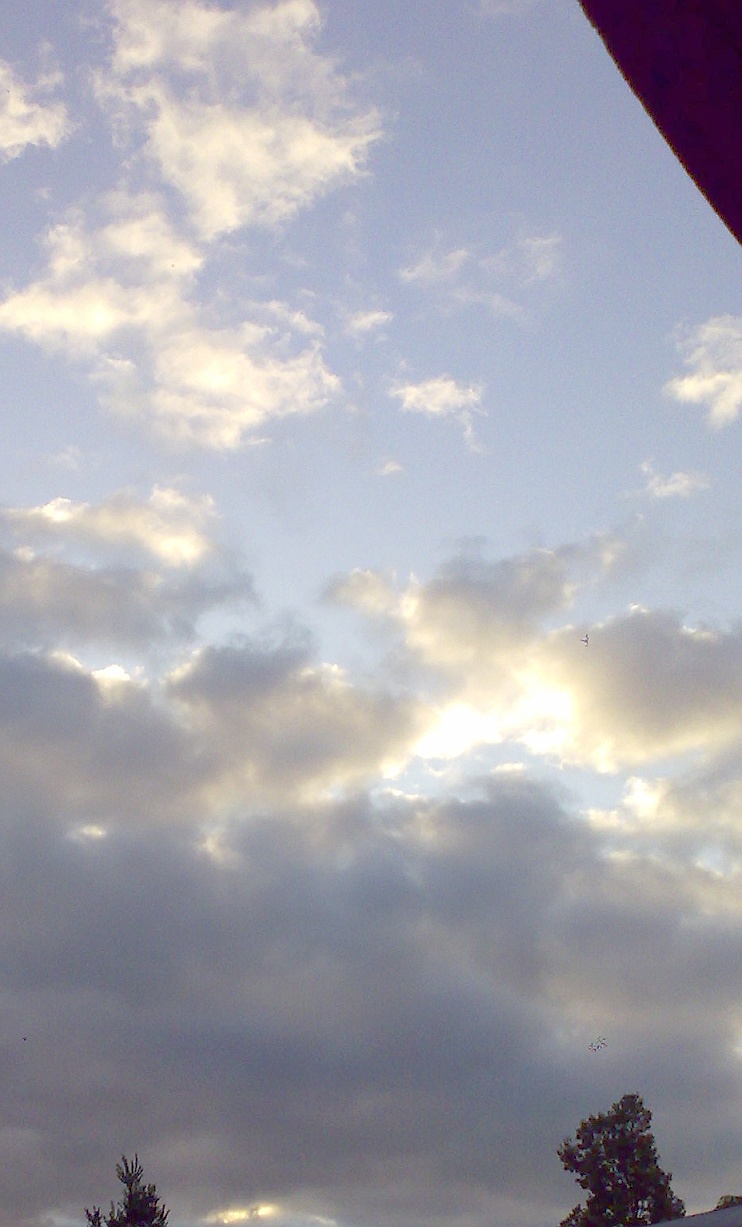
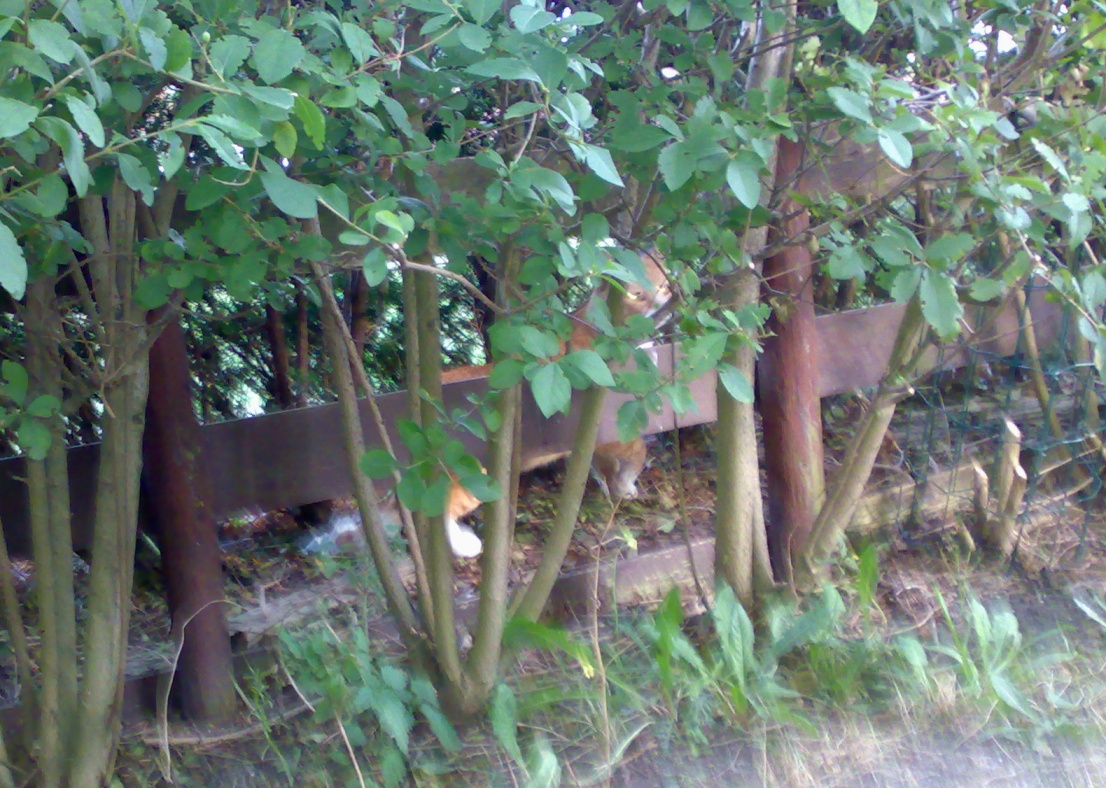
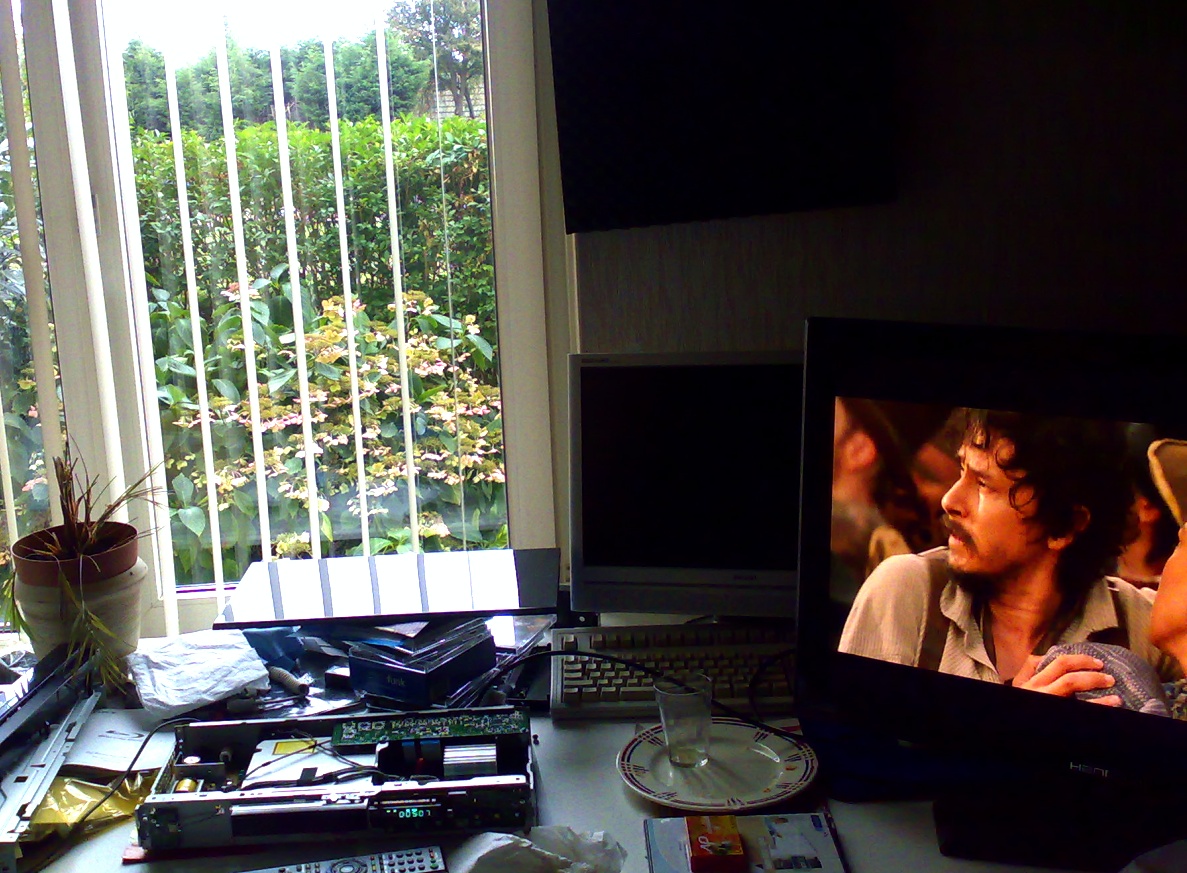
The bluray player didn't do blurays anymore, only normal dvds and CDs,
soappearently it needed cleaning, then it worked agin, above the test.
The media / Cuda machine
Well, again I upgraded the 9500 card pentium D machine's Nvidia driver
for Fedora (10/64), so I was able to install Cuda 2.3, and it works!
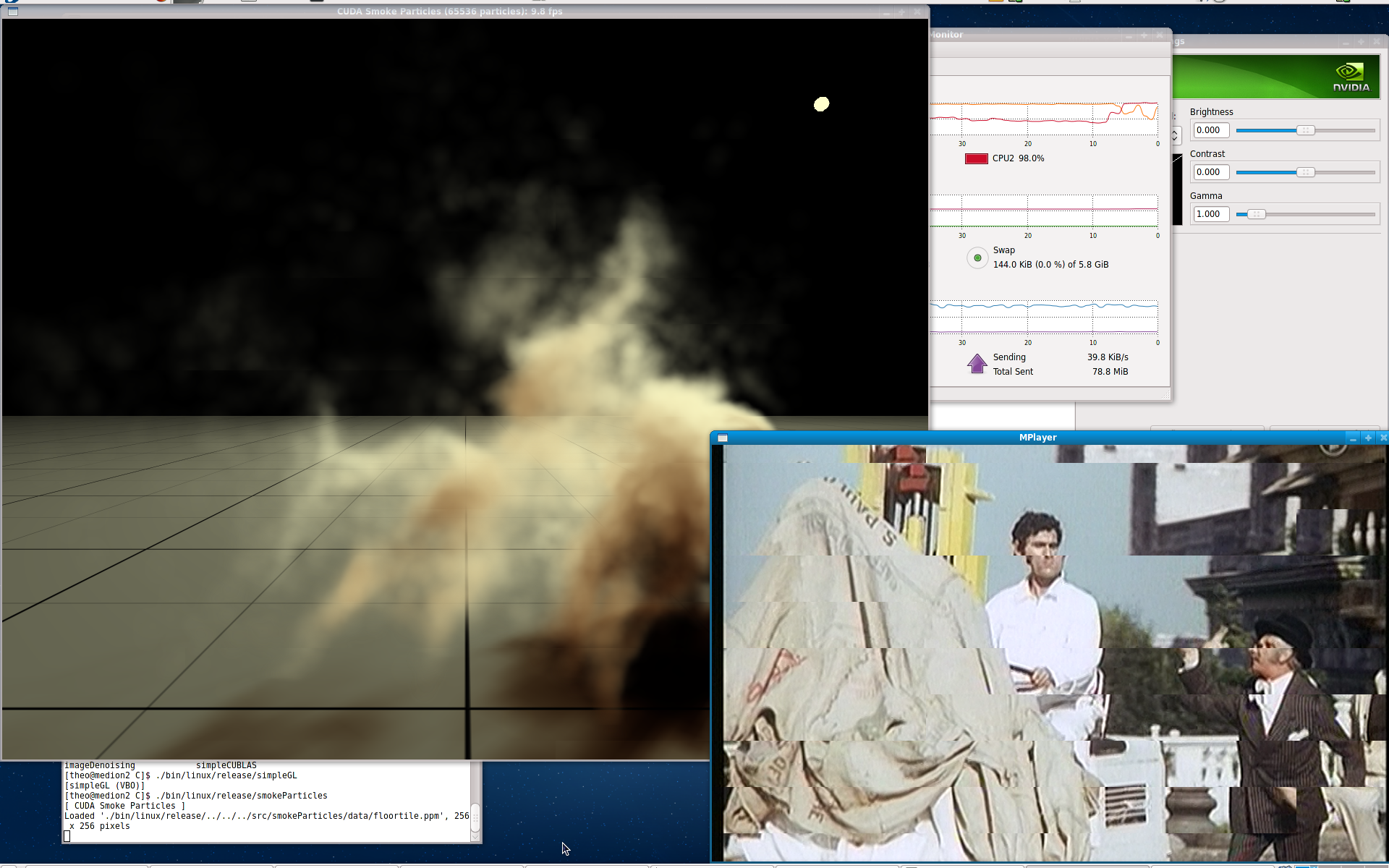

I compiled a french motion field program, and got it through
compilation, but had t self-compile openCV too, and now I think I need
my self compiled ffmpeg, too, to get it to work with moving video (it
reads only images).
Another interest: the present double TV tuner of farily good quality
now can be used on Linux, and I even got mplayer recompiled with tv
support, so it can now watch two simulataneous TV channels, and even
vdpau appears to work on it!
The signal depends on the frequency on the HF cable and probably on all
kinds of dither patterns interfering:
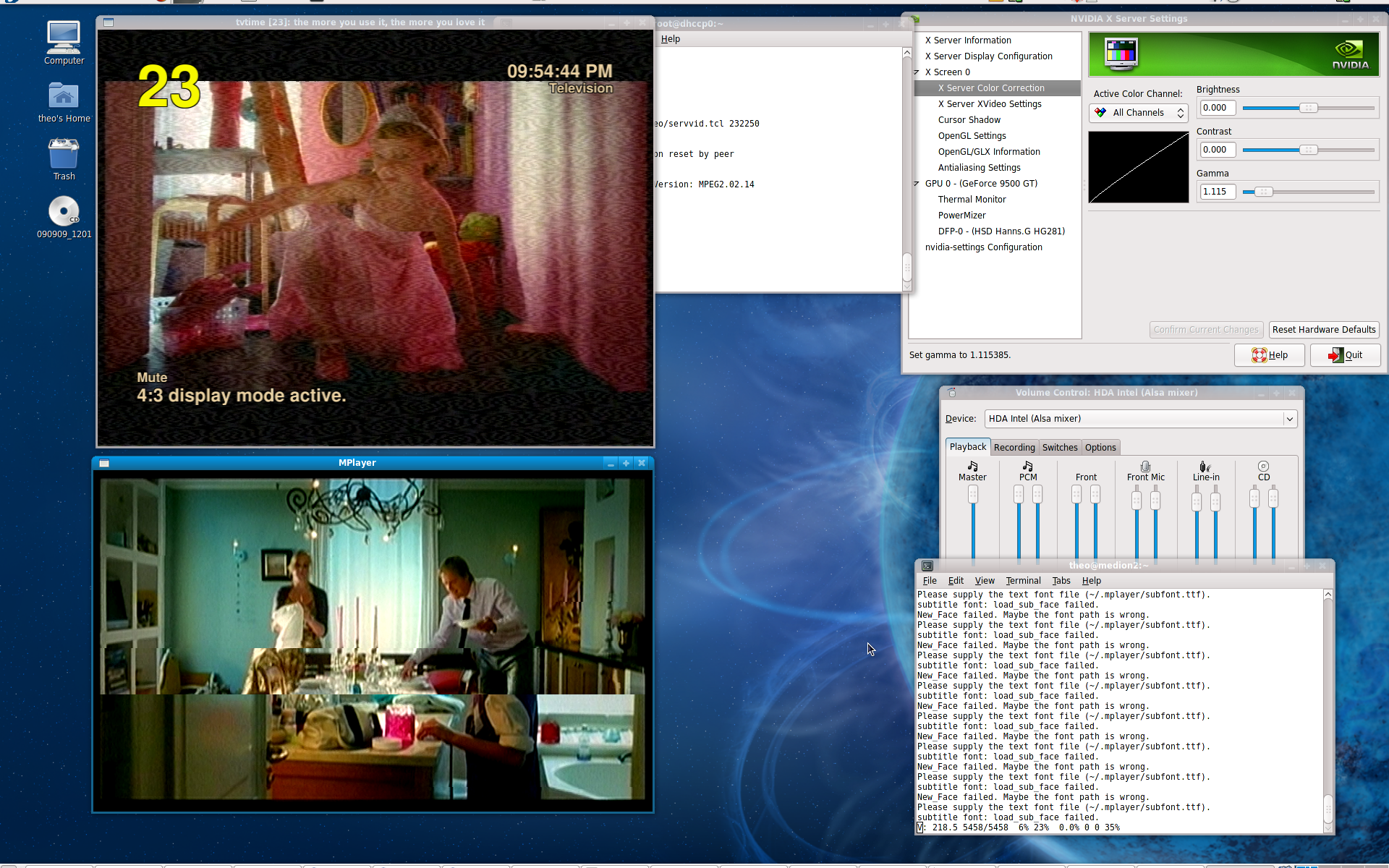
The characters of the mpeg based video stream (with vdpau rendering)
and the video app with certain deinterlacing routines are clearly
different:
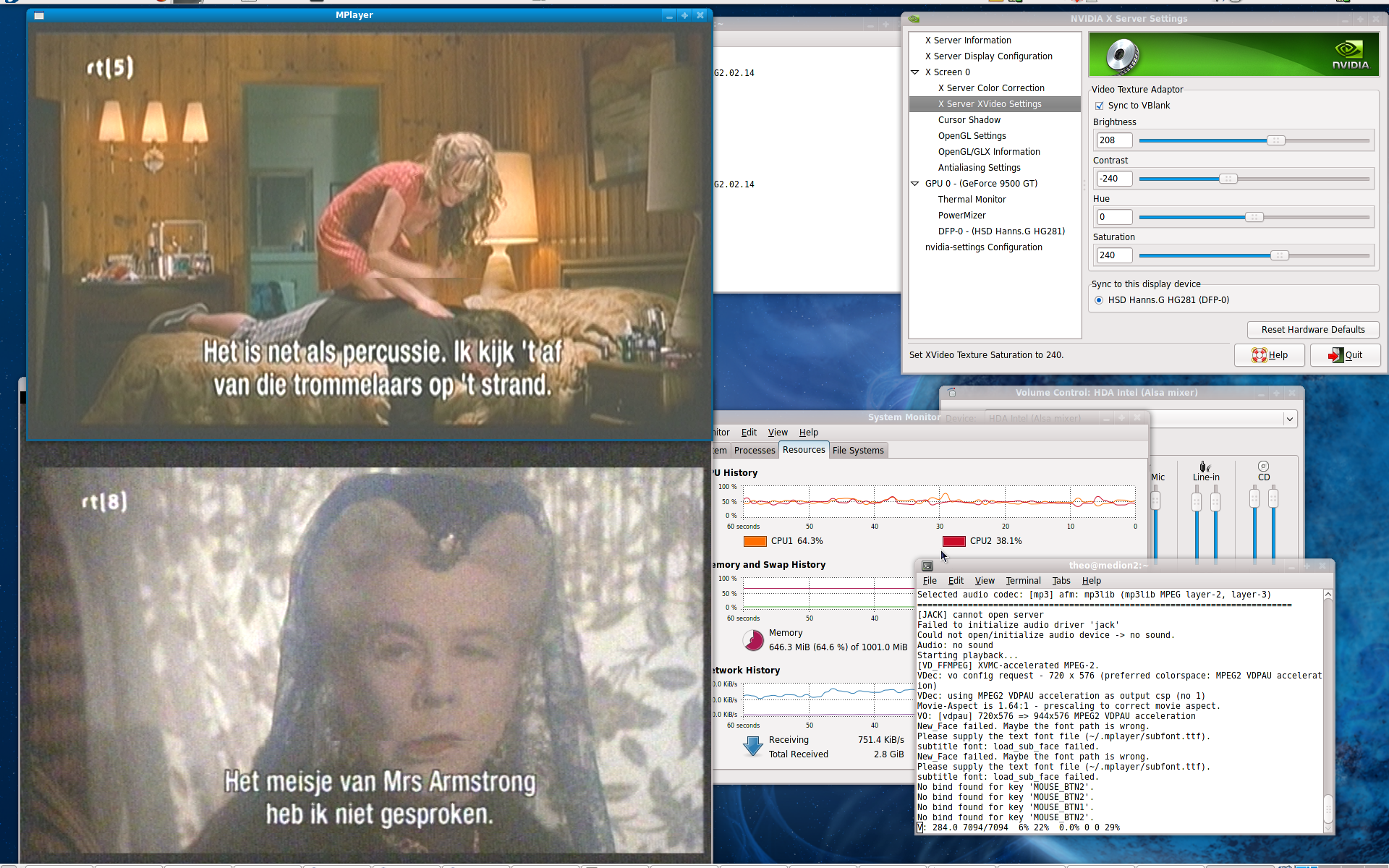
2 tvtime programs with love different channels, and a mplayer
with yet another coming over ethernet:
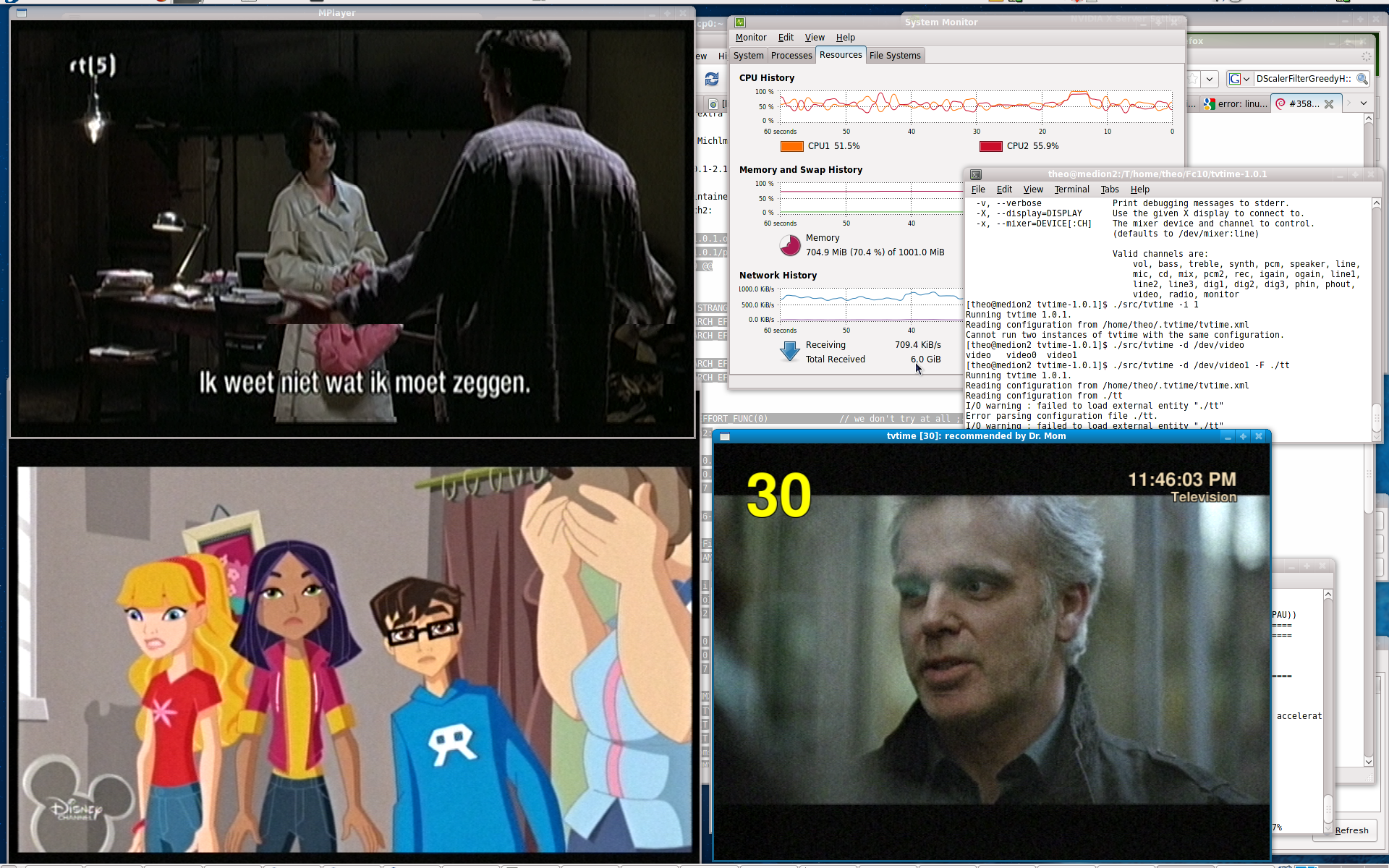

A picture taken with some command line (backgrouns upper right) the
other images are live video streams, keeping up fairly well (but not
perfect) simulataenously: 1 from the server mpeg box, 2 directly from
the dual tuner on the machine, using mplayer (as described above the
screendump isn't atomic, but rather slow, the images sure don't look
that way):
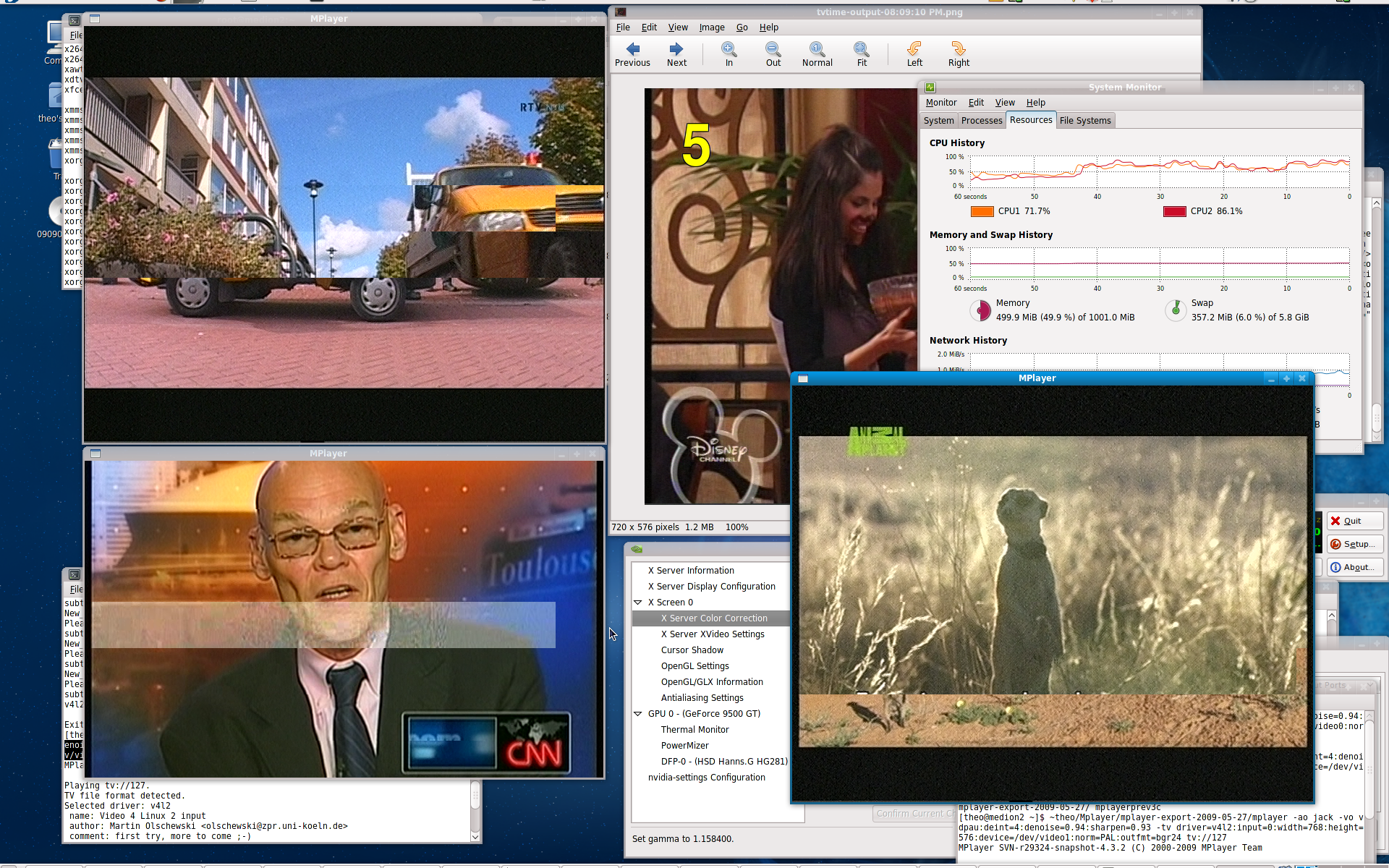
The same cable channel from the servers pinnacle digitizer box and over
a bad cable from one of the tuners from the media machine, rendered on
the screen by mplayer (left image) without compression in the datapath
(so more detail and noise and less signal interpretation and averaging
as with the mpeg2 encoder):
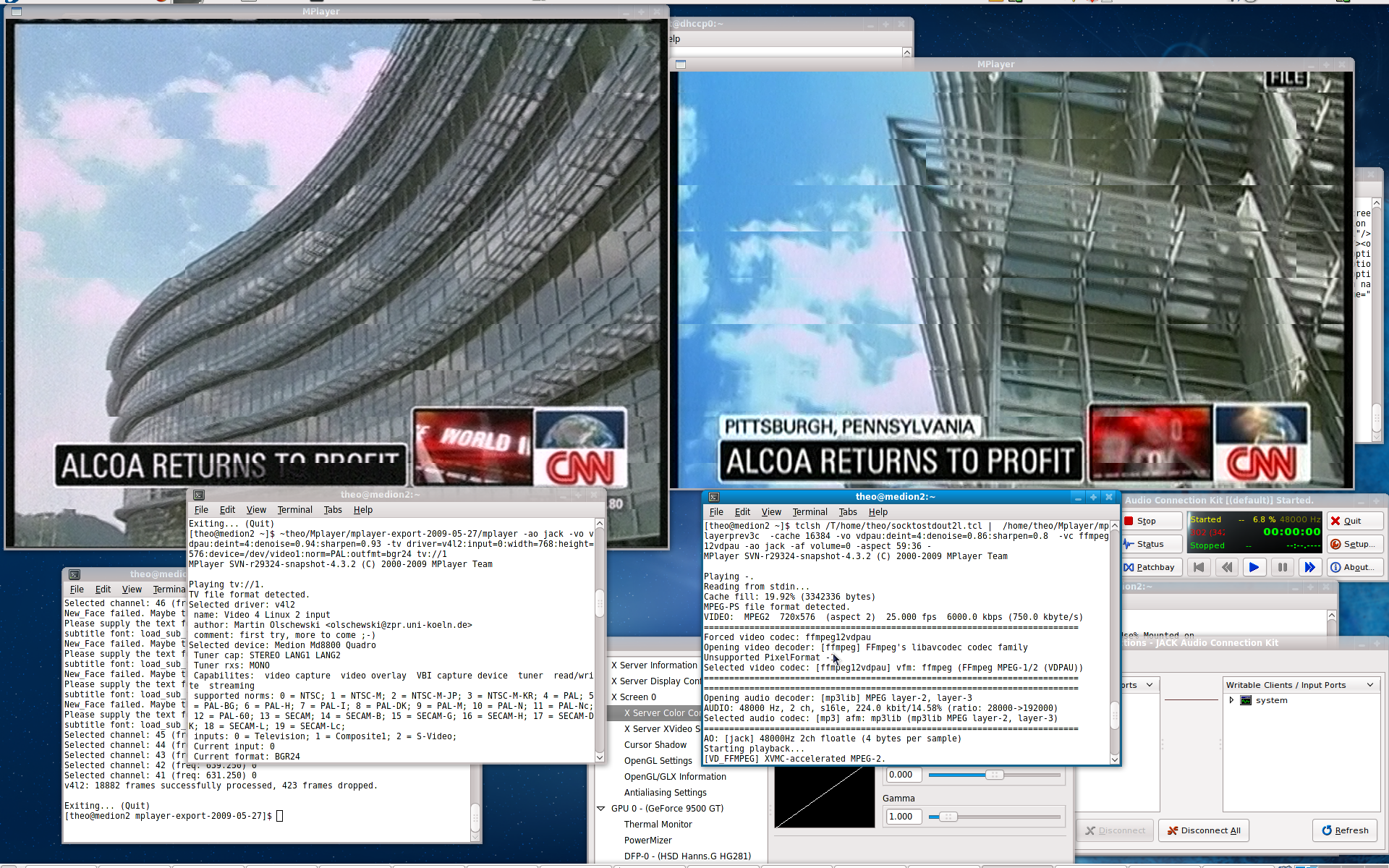
For those with hardware like this, the commands I used arenow also able
to get good sound, and to record and encode (with crop before record)
(on the fly) video + audio, for both tuners.
adevice and device has two valid values:
~theo/Mplayer/mplayer-export-2009-05-27/mplayer
-ao jack -af volume=-18 -af resample=44100:0:2 -vo
vdpau:deint=4:denoise=1:sharpen=0.0 -tv
driver=v4l2:input=0:width=768:height=576:audiorate=32000:alsa:adevice=hw.2,0:device=/dev/video0:immediatemode=0:volume=100:amode=1:norm=PAL:outfmt=bgr24:freq=568.000
tv://
First the above or some tv program is needed to set the channel and
such, then recording can be done for instance like this:
ffmpeg
-f video4linux2 -s 720x576 -r 25 -i /dev/video0 -f oss -ar 32000
-ac 2 -i /dev/dsp2 -croptop 10 -cropbottom 10 -cropleft 10 -cropright
10 -b 12000k -ab 320k -ar 44100 -t 300 -f mpegts -y
/T/home/theo/Fc10/te1.mpg
For the sound, on Fedora 10/64bit I first had to load the kernel module:
modprobe
saa7134 alsa:enable=1
modprobe
saa7134-alsa enable=1,1
this creates two sound devices with 32kS/s stereo 16 bit uncompressed
sources, for the video sound, which can be found in for instance
qjackctl or arecord -l lists them.
With care for the antenna getting strong signal in the machine, and
combined with NVidia's vdpau image enhancement and progressive
rendering, the resulting dual TV is quite good. It's nice to compare
the uncompressed audio and video with high bandwidth compressed
versions of the same, and to play with the filters.
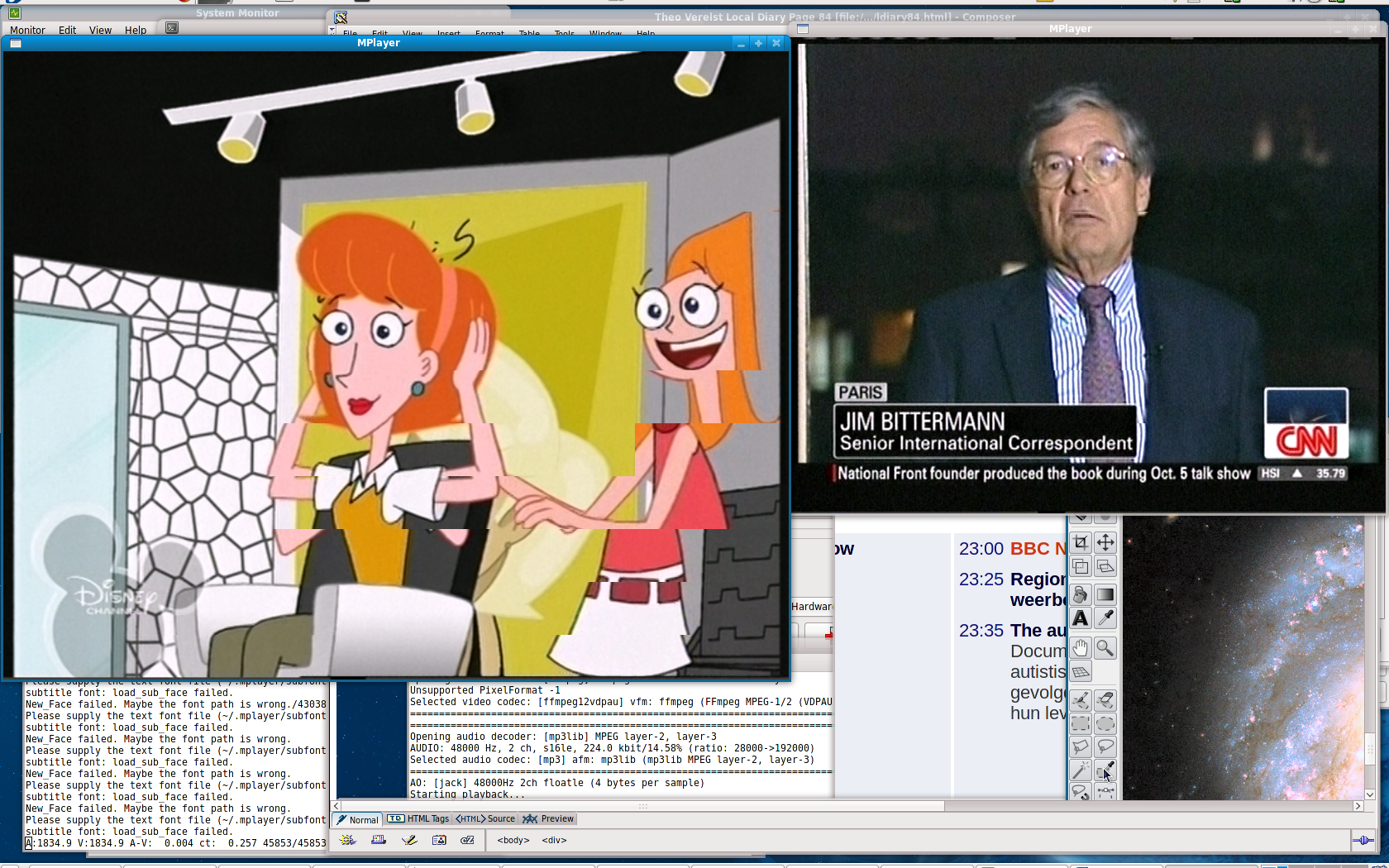
To watch remote two channel simultaneous quality TV (little
compression, over 10 Megabit/sec streams)
on the TV serving machine:
set
s [socket 192.168.1.36 2237]
global argv
puts "connection $s"
flush stdout
# set f [open h:/dinsd2b.wmv r]
# set f [open [lindex $argv 0] r]
fconfigure $s -translation binary
# set f [ open "| dunerec -a 567250 -i 0 -t svcd2 -R -" r]
# set f [ open "| dunerec -a 567250 -i 0 -R -" r]
### set f [ open "| dunerec -a [lindex $argv 0] -t
dvd -i 0 -s 3600 -R - | te
e /home/theo/Video/ateam.mpg" r]
set f [ open "| ffmpeg -f video4linux2 -s 720x576 -r
25 -i /dev/video1 -f o
ss -ar 32000 -ac 2 -i /dev/dsp3 -croptop 70 -cropbottom 70 -cropleft 12
-croprig
ht 8 -b 12000k -ab 320k -ar 44100 -t 3600 -f mpegts - 2>
/dev/null" r]
# set f [ open "| dunerec -a [lindex $argv 0] -t vcd
-i 2 -R -" r]
fconfigure $f -translation binary
fileevent $s readable "puts \"read: \[gets $s\]\" ; flush
stdout
if \[eof $s\] {
close $s
close $f
puts {End of file.}
exit } "
after 20
fileevent $s writable "fcopy $f $s -size 512
if \[eof $s\] {
flush $s
flush $f
close $s
close $f
puts {End of file.}
flush stdout
exit }"
# after 70 " flush $s "
vwait forever
started by:
tclsh
servvid2b.tcl
And this Tcl script on the receiving (in this case HD notebook) machine:
set s [socket
-server se 2237]
proc se {s b
c} {
fconfigure
$s -translation binary -buffering full
fconfigure
stdout -translation binary -buffering full
fileevent
$s readable "puts -nonewline stdout \[read $s 16384\]; flush stdout"
}
vwait forever
Via cygwin started by:
tclsh /cygdrive/c/Theo/mplayer/socktostdout2l2b.tcl |
/cygdrive/c/Theo/Mp/MPlayer-rtm-svn-29355/mplayer.exe -cache 4096
-softvol -af volume=-8 -
Looks like:
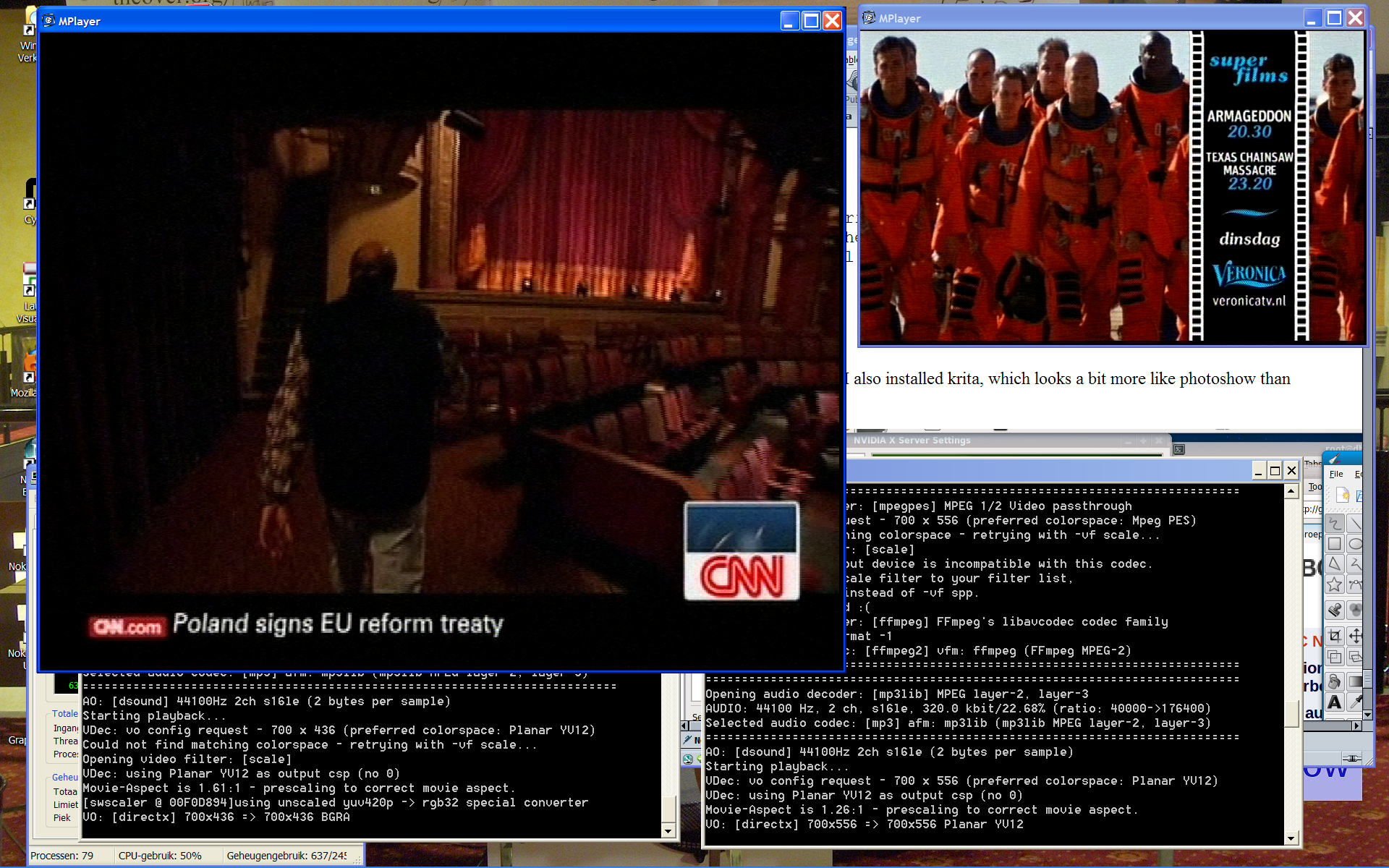
On the Cuda machine, I also installed krita, which looks a bit more
like
photoshow than cinepaint:
